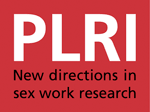Structural Violence and Structural Vulnerability Within the Risk Environment: Theoretical and Methodological Perspectives for a Social Epidemiology of HIV Risk Among Injection Drug Users and Sex Workers
An article in Rethinking Social Epidemiology 2012, Part 3, 205-230. The transmission of HIV is shaped by individual-environment interactions. Social epidemiologic approaches thus seek to capture the dynamic and reciprocal relationships of individual-environment interactions in the production and reduction of risk. This presents considerable methodological, theoretical and disciplinary challenges. Drawing upon four research case studies, we consider how methods and concepts in the social and epidemiologic sciences might be brought together towards understanding HIV risk as an effect of social, cultural and political condition. The case studies draw upon different combinations of methods (qualitative, ethnographic and quantitative) and disciplines (sociology,

